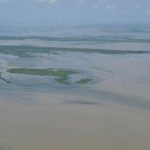
Two ways to find your buddies’ fishing holes
Dear Capt. Paul,
I have some coordinates directly from a buddy’s GPS, but they are not bringing me to the same location as his GPS? Is there more than one way to measure/input coordinates? What are we missing here? Why won’t they work?
Response by Capt. Paul:
Yes, there are different ways to state a longitude-latitude position.
In order for his position coordinates to indicate the same position in your GPS unit, the coordinates must be entered using the same settings your friend used to mark or enter his coordinates.
First, check the following configuration settings in his and your unit.
Look at the location, which is sometimes called the position format. Most GPS now use a format for latitude-longitude setting of degrees, minutes and thousandths of minutes. It will be shown as DDD,MM.mmm, but the GPS unit usually can also be set to degrees, minutes, seconds and tenths of seconds shown as DDD,MM,SS.s and even a setting of decimal degrees, shown as DDD.dddddd.
Each of these settings requires the position be stated in the format being used in the GPS unit.
Entering N 29°55.525’ — a DDD, MM.mmm format — into a unit set up to a display of degrees, minutes and seconds would not yield the same position.
The N 29°55.525’ position would actually be N 29°55’ 31.5”, and should be entered as such.
Of course, the same would apply for a position for decimal degrees, which would actually be shown as N 29.33315°.
Trying to force one format into another simply will not work.
So how do you correct it?
You have two choices: You can either mathematically convert one to another, or you can let your GPS unit take care of the conversion.
If you want to do the math, you first need a little high school geometry. No, you will not have to use algebra, as simple math will do.
But remember that there are 60 seconds in a minute and 60 minutes in a degree. No position can have more than 59.9999 minutes or 59.9999 seconds.
The latitude-longitude concept has divided the earth in to halves. There is a northern and southern hemisphere that is divided in latitude readings between the equator at 0 degrees to the poles at 90 degrees, and longitude half that are described between 0 degrees to 180 degrees longitude.
Locations in our area are always in the Northern and Western hemispheres.
If you are entering the coordinates as degrees, minute, seconds and tenth of seconds (ddd,mm,ss.s) in your computer, you can convert them to ddd,mm.mmm by dividing the seconds by 60.
A figure of seconds and decimal part of a second can be converted to minutes by dividing the seconds (and any decimal part) by 60.
So N29° 30’ 20.4” (ddd,mm,ss.s ) converts to N29° 30.340’ (20.4 divided by 60).
If you are entering the coordinates as degrees, minutes and thousandths of a minute (ddd,mm.mmm) in your computer and you want to convert it to degrees, minutes and seconds, (ddd,mm,ss.s) you would multiply the fraction of a minute by 60.
So 29° 30.340’ (ddd,mm.mmm) [.340’ x 60 = 20.4”] = 29° 30’ 20.4” (ddd,mm,ss.s).
To convert a ddd,mm.mmm to ddd.ddddddd, you would divide the minutes and the decimal parts of the minutes by 60. ( i.e., N28° 47.140566’ divided by 60 would equal N28.7856761°)
To convert the all-degree figure to degrees, minutes and thousandths of a minute, simply multiply the decimal parts of the degree (.7856761) by 60. One degree equals 60 minutes, so the all-degree figure of N28.7856761° would equal N28° 47.140566’.
Naturally, the same conversion would apply to the longitude settings, as well.
Or, for those of us who would take the easy way, simply change the setting in your GPS to match the format of the stated position. Using the “Menu” feature in your GPS go to the “Position” of “Location” settings and temporarily change it to the desired position, and then enter the data into the provided format before changing the position format back to the common format you are normally use.
So just find out what your buddy is using to be able to enter his positions into your unit with similar settings, and then change back to your normal location setting.
To ensure the best accuracy you should also check the datum settings in your unit.
The datum settings of both positions must be the same for the value of the actual positions to be the same.
Common settings are NAD 29, NAD 63, and WGS 84. The difference between NAD 20 and WGS 84, two of our more common settings for our area, is about 160 feet.
Using other datum settings could result in a difference of several miles.
There are several datum-changing programs available on the Internet that allows you to enter one datum and convert it to another — but, here again, I recommend you simply let your GPS unit do the converting for you.
Check the datum of the given position and change the datum setting in your GPS unit to match the one in the position. Then change your unit back to the recommended setting of WGS 84.
And lastly, check if both GPS units both have the new WAAS differential enabled. WAAS allows modern units to discern a position to within 3 meters of accuracy. Without it, a consumer GPS unit can only display a position to about 15 meters.




